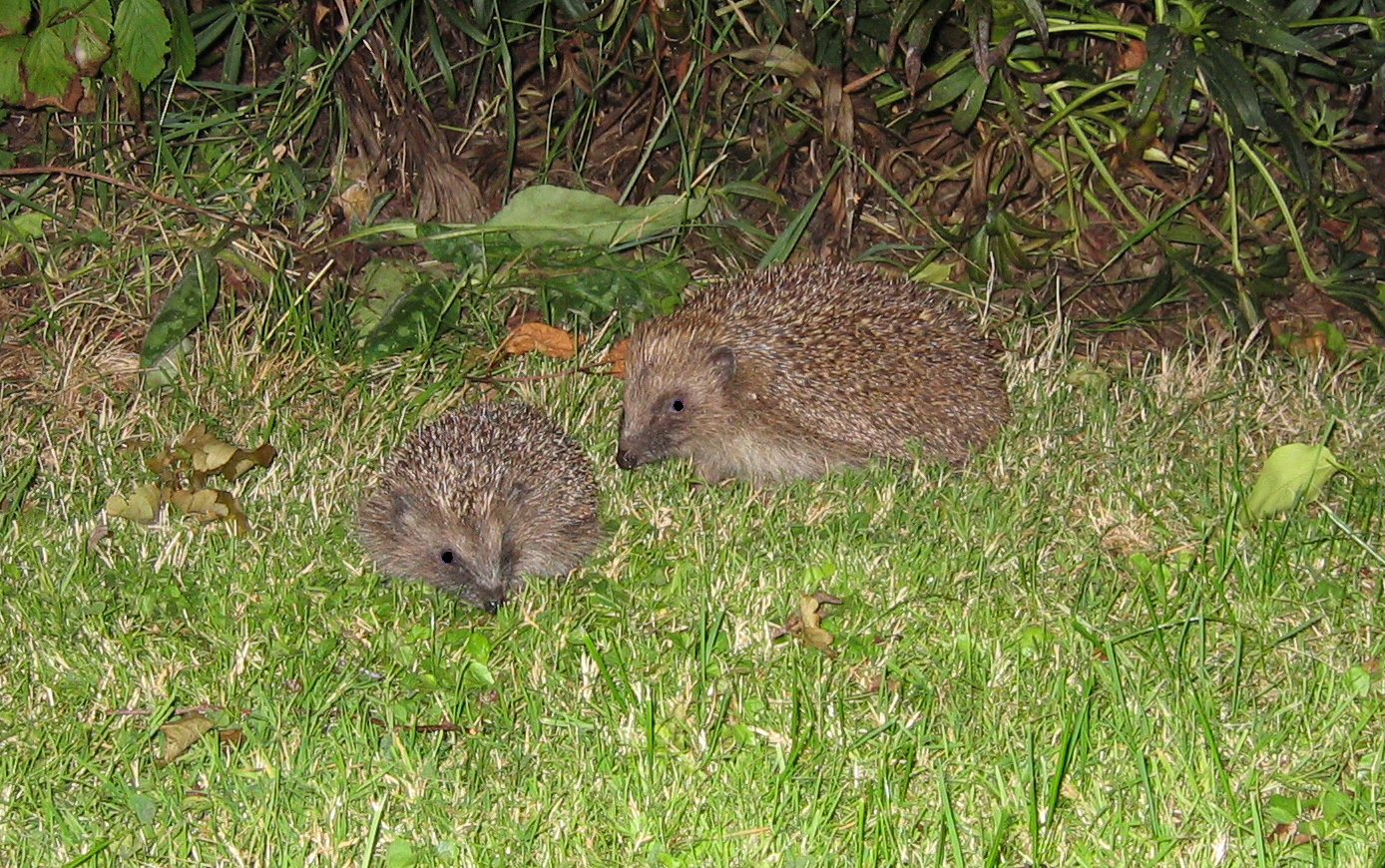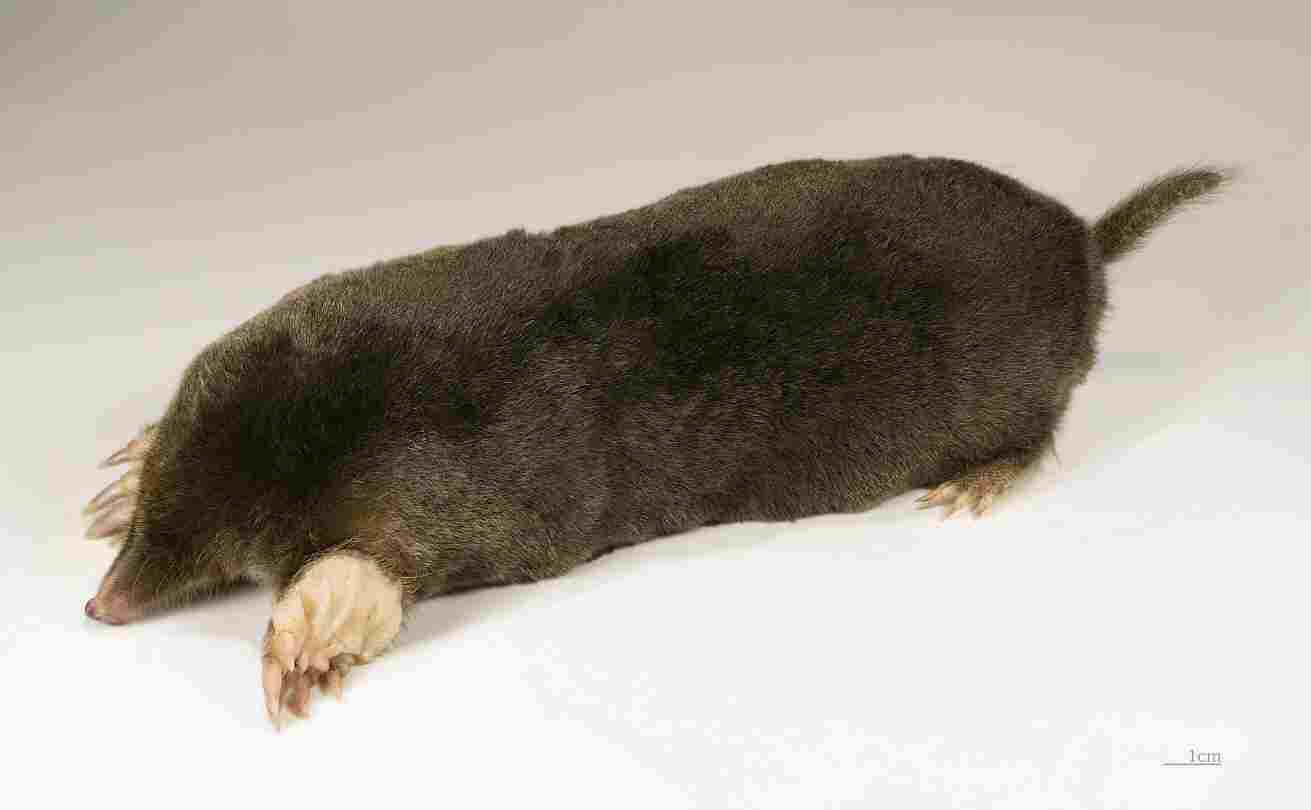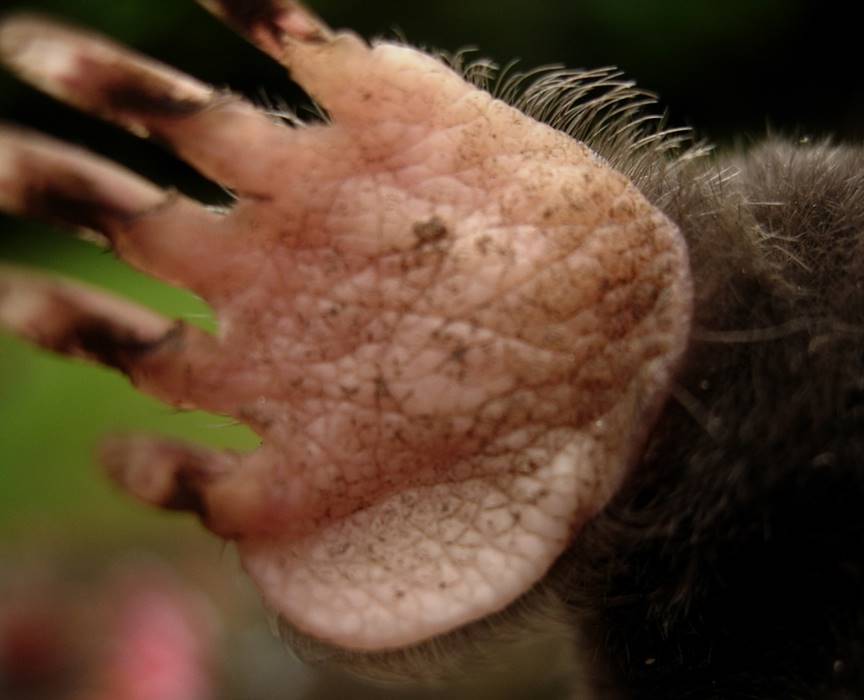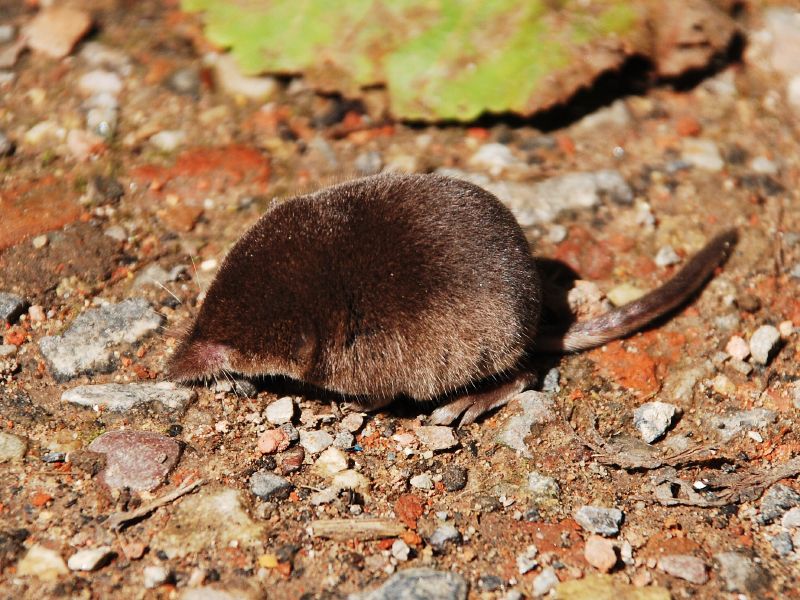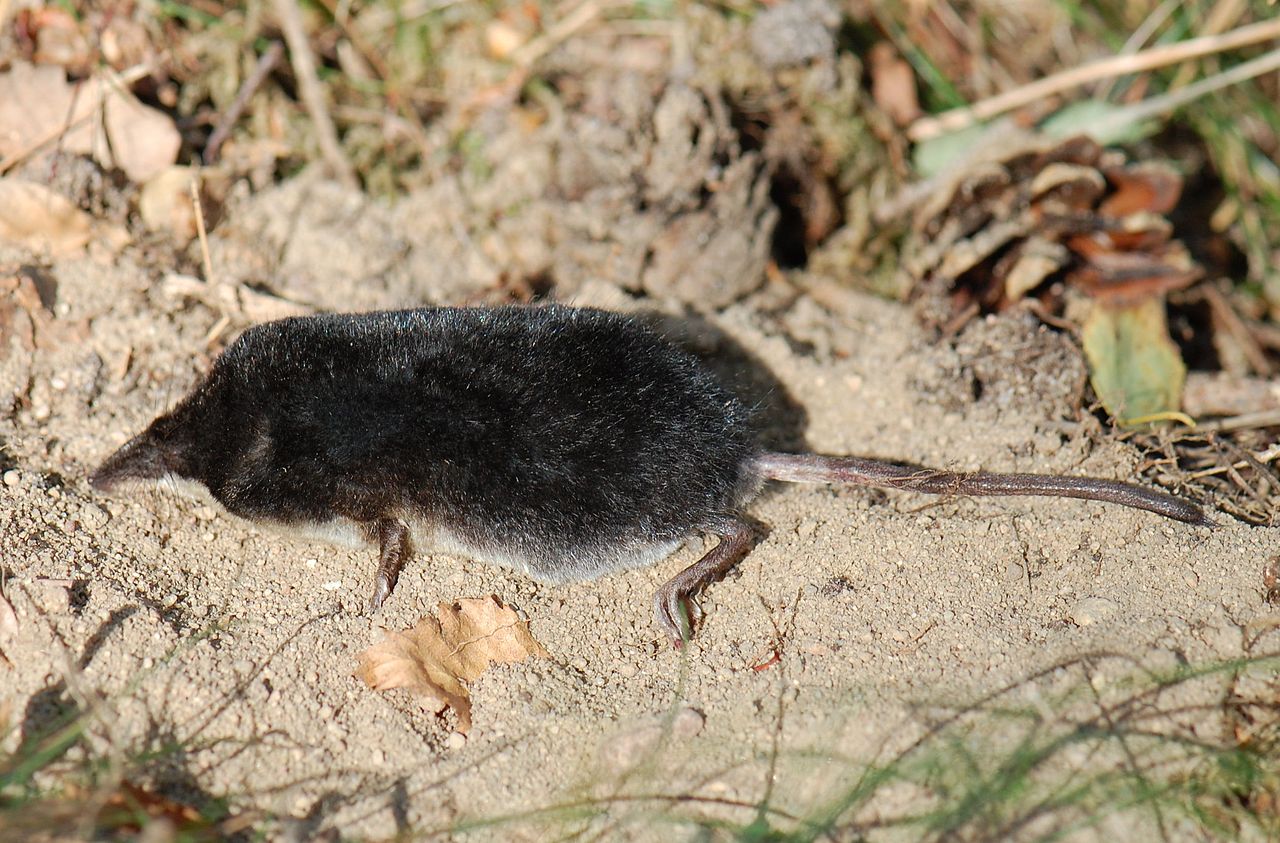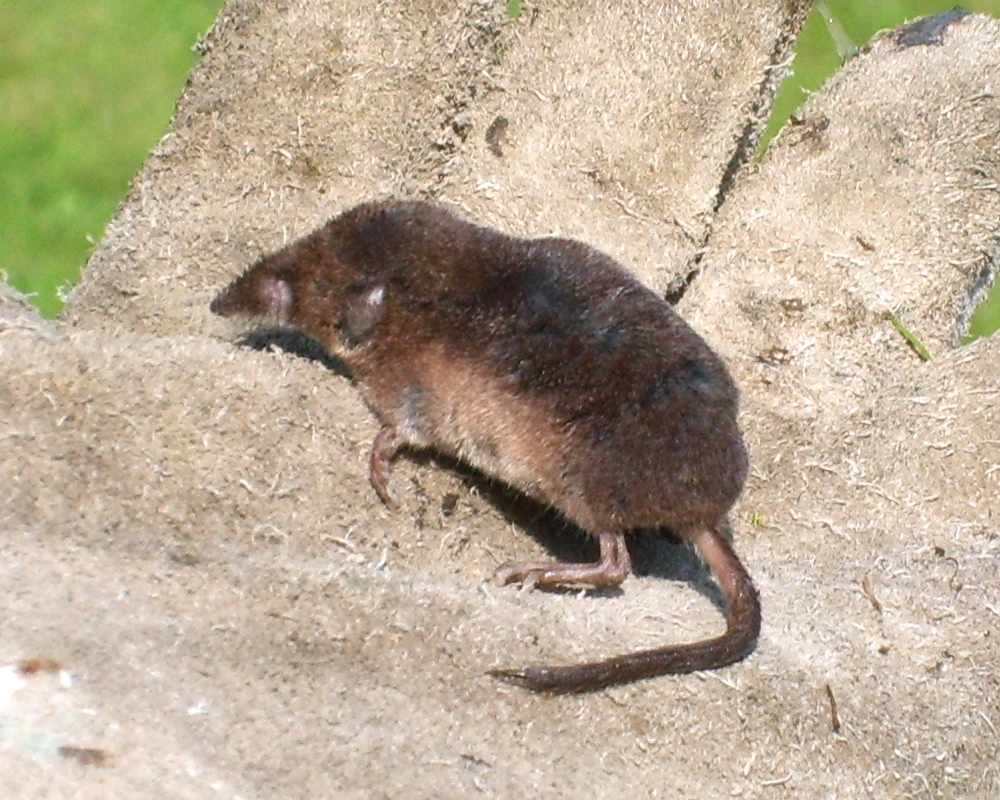Common shrew Sorex araneus
Common shrews are one of the most abundant mammals in Britain. They average 6-8cm in body length, and weigh up to 15gm. They use a network of runways through long vegetation, finding prey, such as earthworms, insect larvae and slugs, by probing and sniffing the soil with their snout. Prey can be located up to 12cm below the surface. In urban environments, they are found in the hedge bottoms and compost heaps of gardens, on road verges and grassy banks, and are frequently found on derelict wasteland. More widely, they are most abundant in thick grass, hedgerows and deciduous woodland. They make nests under logs and grass tussocks or in the burrows of other species.
Although rarely seen, they can be heard, producing soft, high-pitched twitters while they forage and just-audible raucous shrieks and ‘churls’ in aggressive encounters with other shrews.
Appearance and activity Shrews have a distinctive narrow, pointed snout. Common shrews have brown (never black) fur on their back, with a paler, grey underside. The tails of adults tend to be bare and are often scarred. They are active during the day and night, although are most active during darkness. One- to two-hour bursts of activity are followed by periods of rest, usually in the nest but sometimes ‘cat-napping’ elsewhere.
Diet Earthworms, insect larvae, beetles, spiders, slugs and carrion
Status, population size and distribution Native, widespread and common. GB population 41,700,000. The population trend is unknown. They are found throughout Britain but are absent from Ireland, Shetland, Orkney, the Outer Hebrides, the Isle of Man, Scilly Isles and Channel Islands.
Pygmy shrew Sorex minutus
Pygmy shrews are one of Britain’s smallest mammals, with a body length of 4 to 6.5cm. During the summer, when they breed, they can be up to 10 g in weight, but are typically 3.5-7 g, between that of a one and two pence coin, and only pipistrelle bats weigh as little. They have grey-brown fur, paler than that of the common shrew, and a long, slightly hairy tail. Pygmy shrews are active both day and night, but rest frequently. They use a network of runways like common shrews but do not dig for prey beneath the soil surface and never eat earthworms, which are probably too large to tackle.
Appearance and activity They are paler than the common shrew, with a long slightly hairy tail.
Diet Pygmy shrews consume one and a quarter times their body weight each day in order to maintain their energetic metabolisms, and beetles, spiders and woodlice make up most of their diet.
Status, population size and distribution Native and common. Population trend is unknown. They are one of two species of shrew found in Ireland; the other – the greater white-toothed shrew – was reported there for the first time in 2008.
Water shrew Neomys fodiens
Water shrews are found by clean clear streams and rivers, and also in lakes and wetlands. They have dark brown fur and white-tufted ears than can be closed in the water. Their tail has a fringe of stiff hairs that acts as a rudder, and they paddle using their hind feet, swimming and hunting to 70cm depth.
Diet Fresh water crustaceans such as amphipods ("water shrimp"), small snails, insect larvae and small fish and frogs.
Status, population size and distribution GB population is about 1,900,000, possibly declining. They are commonest in England, and absent from Ireland and most islands.
Page drafted by David Wembridge, People’s Trust for Endangered Species
Reviewed and edited by Steve Head
Reference
1. Edwards, G.R., Crawley, M.J., Heard, M.S. (1999) Factors influencing molehill distribution in grassland:
implications for controlling the damage caused by molehills. Journal of Applied Ecology 36 (3): 434-442

